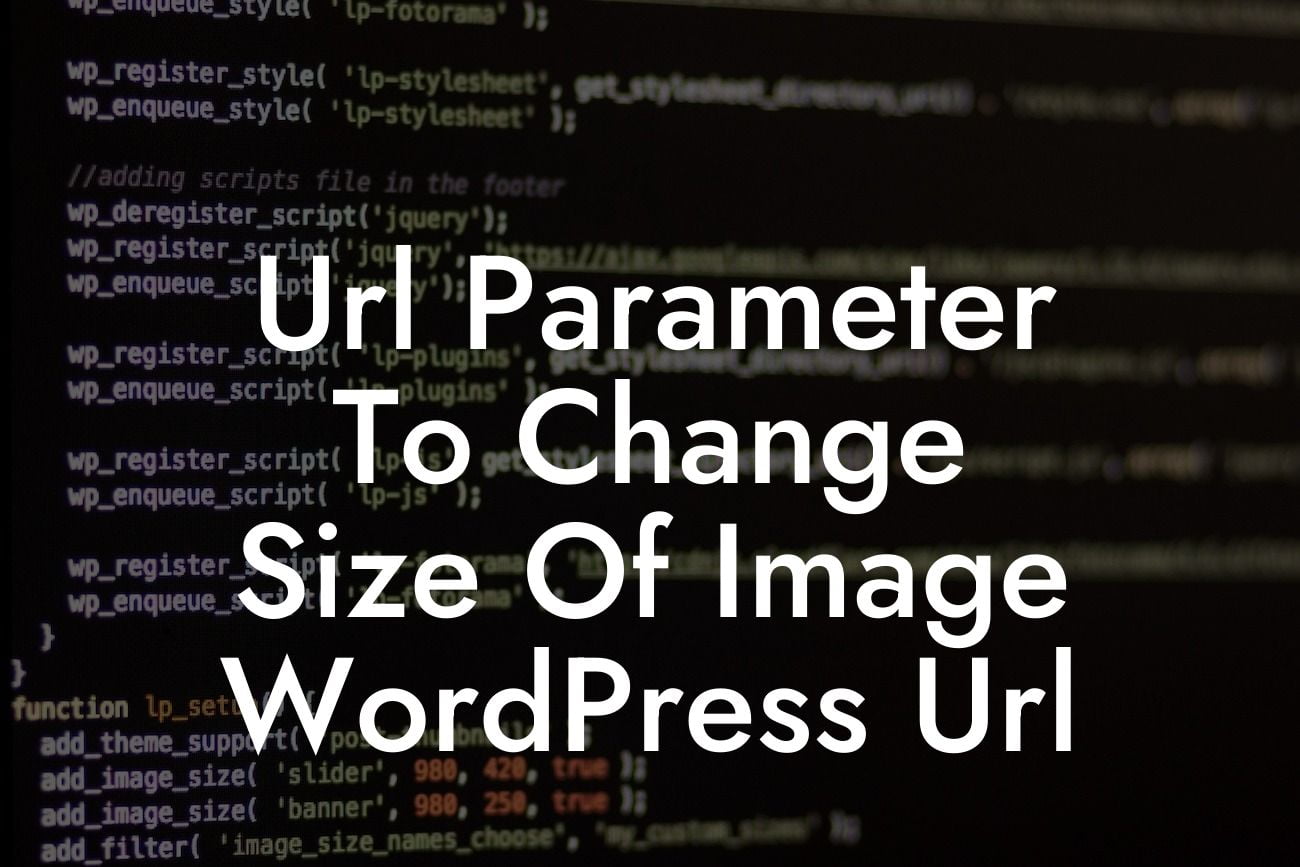URL parameters play a crucial role in web development and search engine optimization. By leveraging these parameters, you can effortlessly modify various aspects of your website, including images. In this article, we will explore how to use URL parameters to change the size of images in WordPress URLs. This technique can significantly enhance your website's visual appeal, boost loading speed, and improve user experience. Let's dive into the details!
Changing the size of images in WordPress URLs is a simple yet powerful way to optimize your website. Here's a detailed breakdown of the process:
1. Understanding URL Parameters:
URL parameters are additional values added to the end of a URL, following a question mark (?). These parameters modify the behavior of the page loading process and offer various customization options. In the case of image resizing, we will focus on the 'width' and 'height' parameters.
2. Specifying the Image Size:
Looking For a Custom QuickBook Integration?
To change the size of an image in WordPress, you can use the 'width' and 'height' parameters. For example, by adding "?width=500&height=300" to the end of an image URL, you can set the image dimensions to 500 pixels width and 300 pixels height. This ensures the image fits perfectly within your desired space.
3. Dynamic Image Resizing:
To make the resizing process more convenient, WordPress provides built-in functions like 'wp_get_attachment_image_url' and 'add_image_size.' These functions allow you to define custom image sizes, such as thumbnail, medium, and large, which can be called using the URL parameters mentioned above.
4. Optimizing SEO with Alt Text and Title Attributes:
While resizing images, it's crucial to add relevant alt text and title attributes. These attributes play a vital role in search engine optimization and improve accessibility. Incorporating descriptive keywords within these attributes can help search engines understand the context of your images, ultimately boosting your website's visibility.
Url Parameter To Change Size Of Image Wordpress Url Example:
Let's consider a realistic example to better understand the process. Imagine you have a blog post with an image URL as follows:
"example.com/wp-content/uploads/2022/01/image.jpg"
To resize this image to a width of 800 pixels and a height of 600 pixels, you need to modify the URL. Simply add "?width=800&height=600" to the end of the URL:
"example.com/wp-content/uploads/2022/01/image.jpg?width=800&height=600"
Congratulations! You have now learned how to change the size of images in WordPress URLs using URL parameters. Enhancing your website's visual appeal and optimizing user experience is just a few clicks away. Explore DamnWoo's range of powerful WordPress plugins designed exclusively for small businesses and entrepreneurs to take your online presence to new heights. Share this article with fellow entrepreneurs and stay tuned for more insightful guides from DamnWoo. Try our awesome plugins today and unleash the extraordinary!
By implementing URL parameter-based image resizing techniques and harnessing DamnWoo's expertise, your website will surely surpass the expectations of your audience. Elevate your online presence and witness the transformative power of optimized images!













